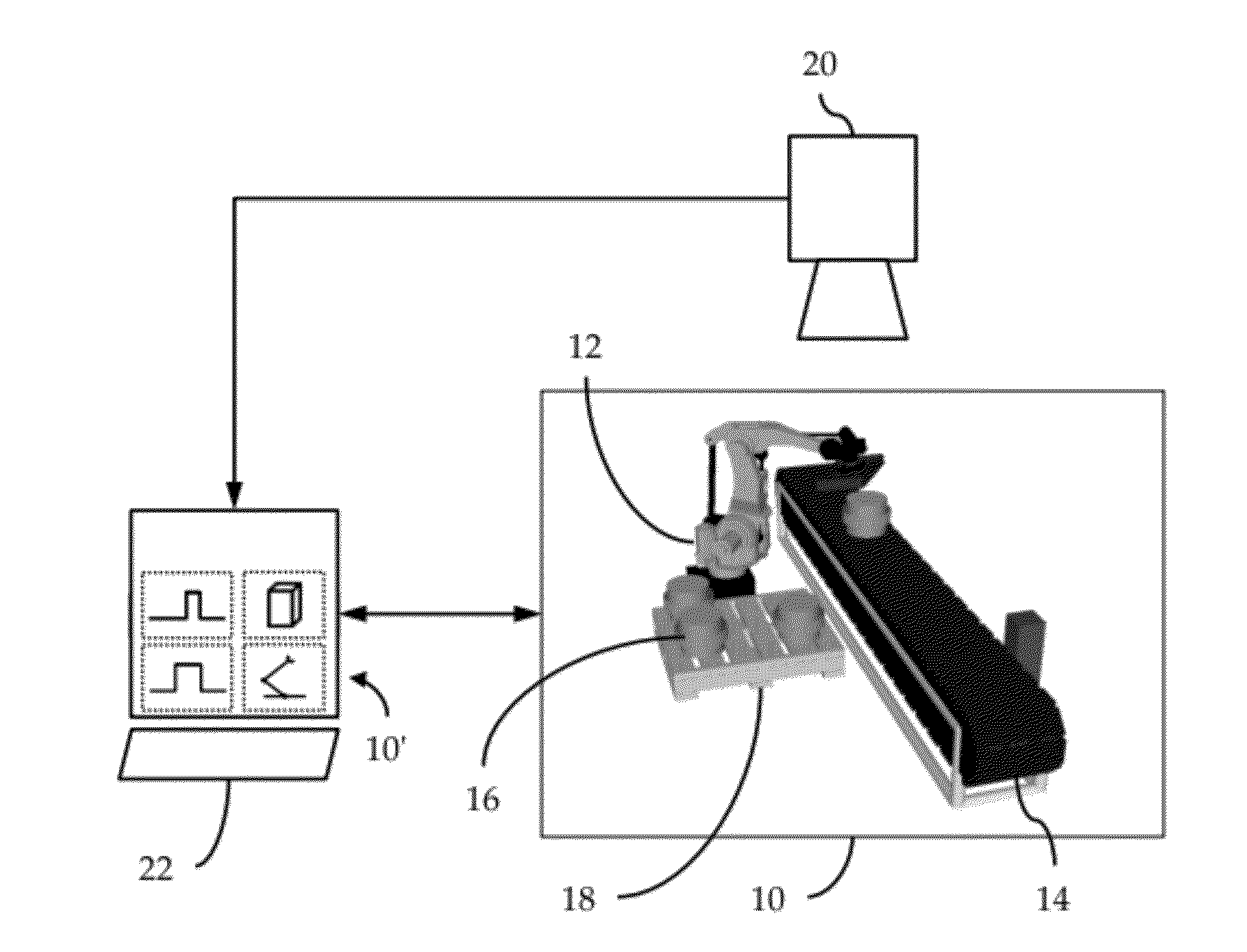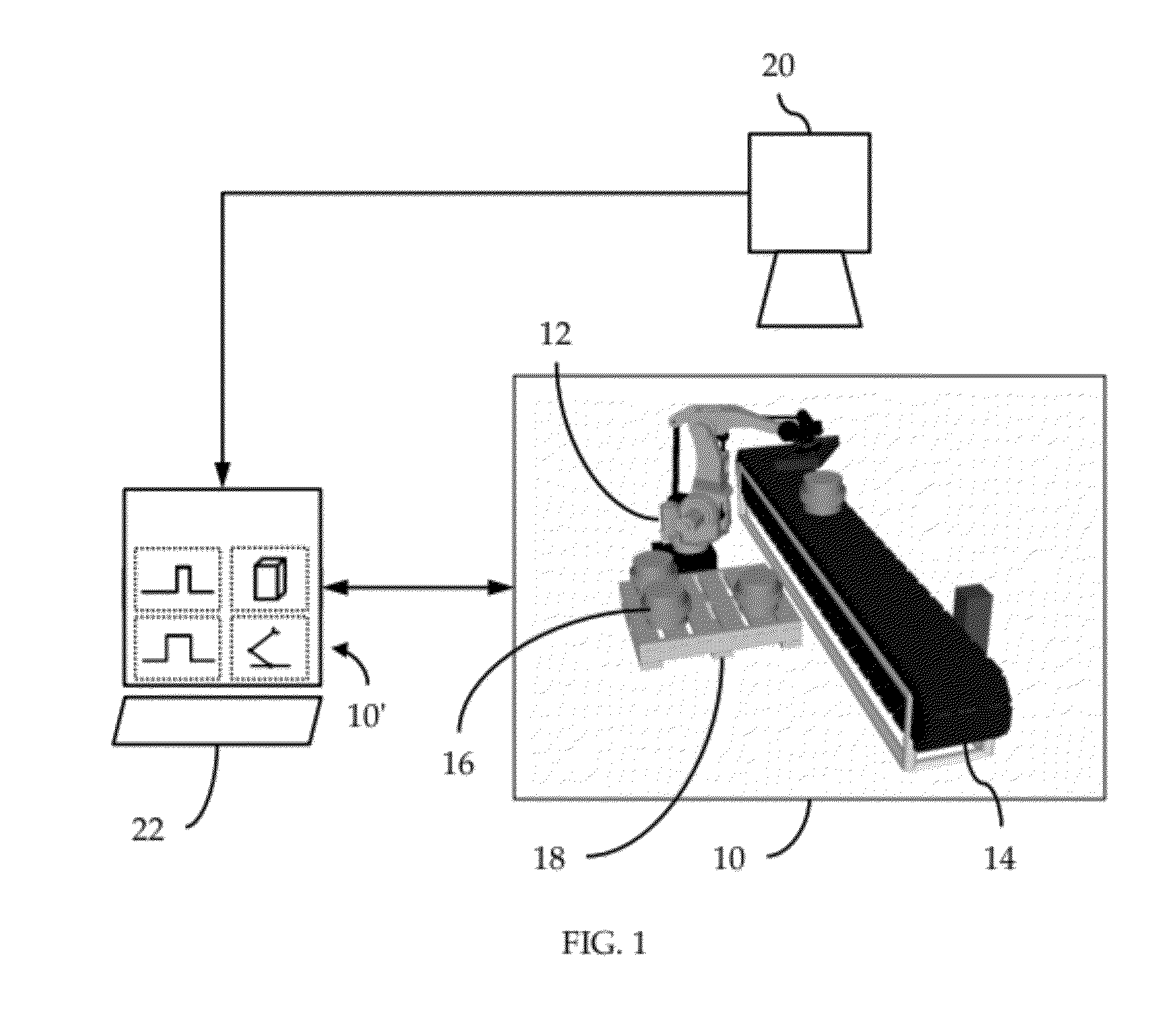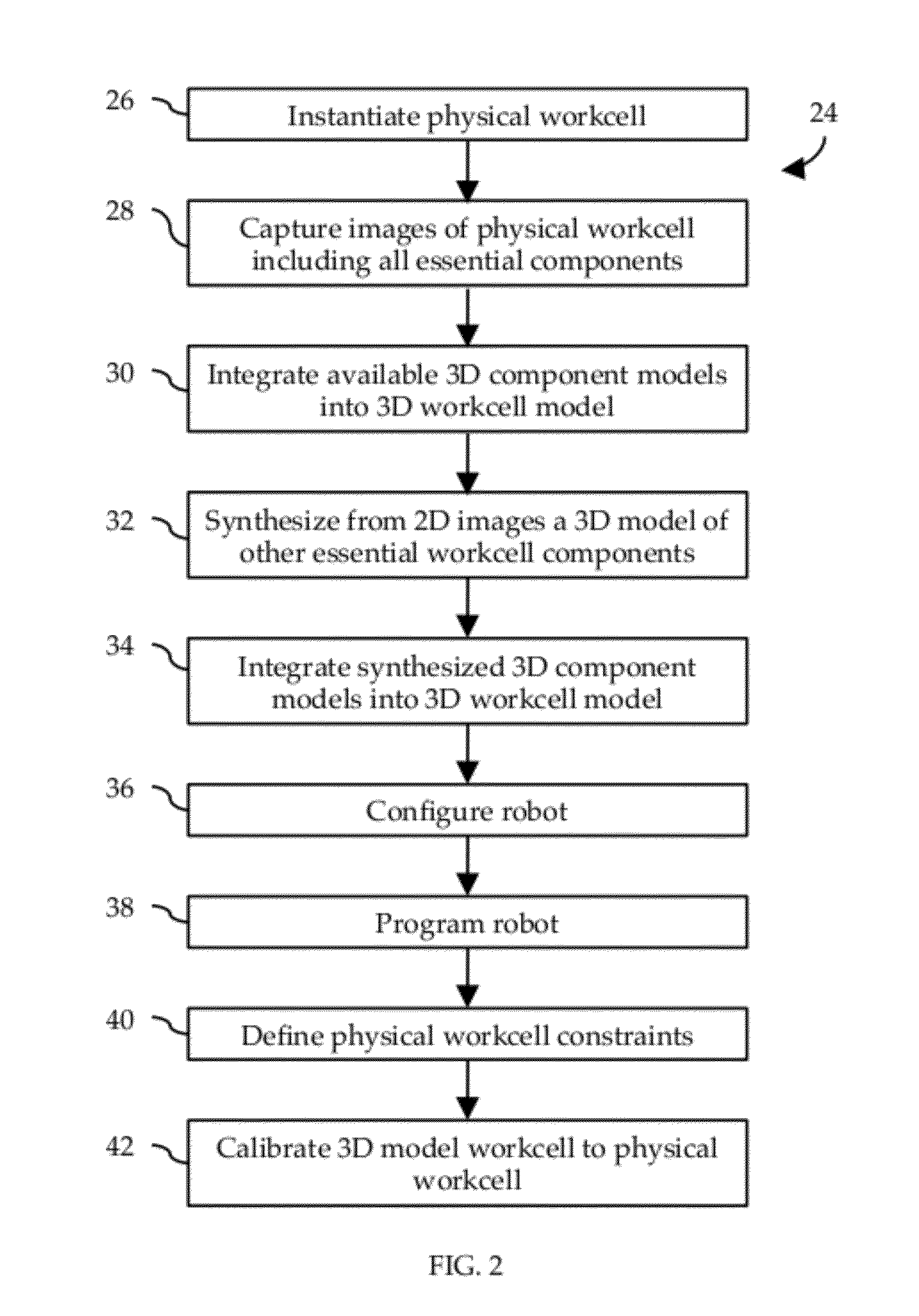Method to Model and Program a Robotic Workcell
a workcell and robotic technology, applied in the field of robot programming methodologies, can solve the problems of increasing the time required for robot operation, increasing the cost of robotic and workcell programming, and not seeing wide acceptance of techniques, so as to reduce the time to operation of the robot
- Summary
- Abstract
- Description
- Claims
- Application Information
AI Technical Summary
Benefits of technology
Problems solved by technology
Method used
Image
Examples
Embodiment Construction
[0018]Illustrated in FIG. 1 is a typical instantiation of the types and configuration of hardware components that will comprise a fully operational, physical workcell 10. By way of example, the workcell 10 comprises a robot 12 and a peripheral device 14 adapted sequentially to convey a series of workpieces 16 from a location outside the workcell 10 into the workcell 10 for transfer by the robot 12 to a pallet 18; of course, if desired, the workcell 10 can be reconfigured such that the robot 12 sequentially transfers a series of workpieces 16 from the pallet 18 onto the peripheral device 14 for conveyance to a location outside of the workcell 10.
[0019]Associated with workcell 10 is at least one camera system 20 positioned so as continuously to provide to a robot control system 22 precise location information on each of the workpieces 16 being conveyed by the peripheral device 14 toward the robot 12. In particular, my control system 22 is specially adapted to perform a number of compu...
PUM
 Login to View More
Login to View More Abstract
Description
Claims
Application Information
 Login to View More
Login to View More - R&D
- Intellectual Property
- Life Sciences
- Materials
- Tech Scout
- Unparalleled Data Quality
- Higher Quality Content
- 60% Fewer Hallucinations
Browse by: Latest US Patents, China's latest patents, Technical Efficacy Thesaurus, Application Domain, Technology Topic, Popular Technical Reports.
© 2025 PatSnap. All rights reserved.Legal|Privacy policy|Modern Slavery Act Transparency Statement|Sitemap|About US| Contact US: help@patsnap.com



